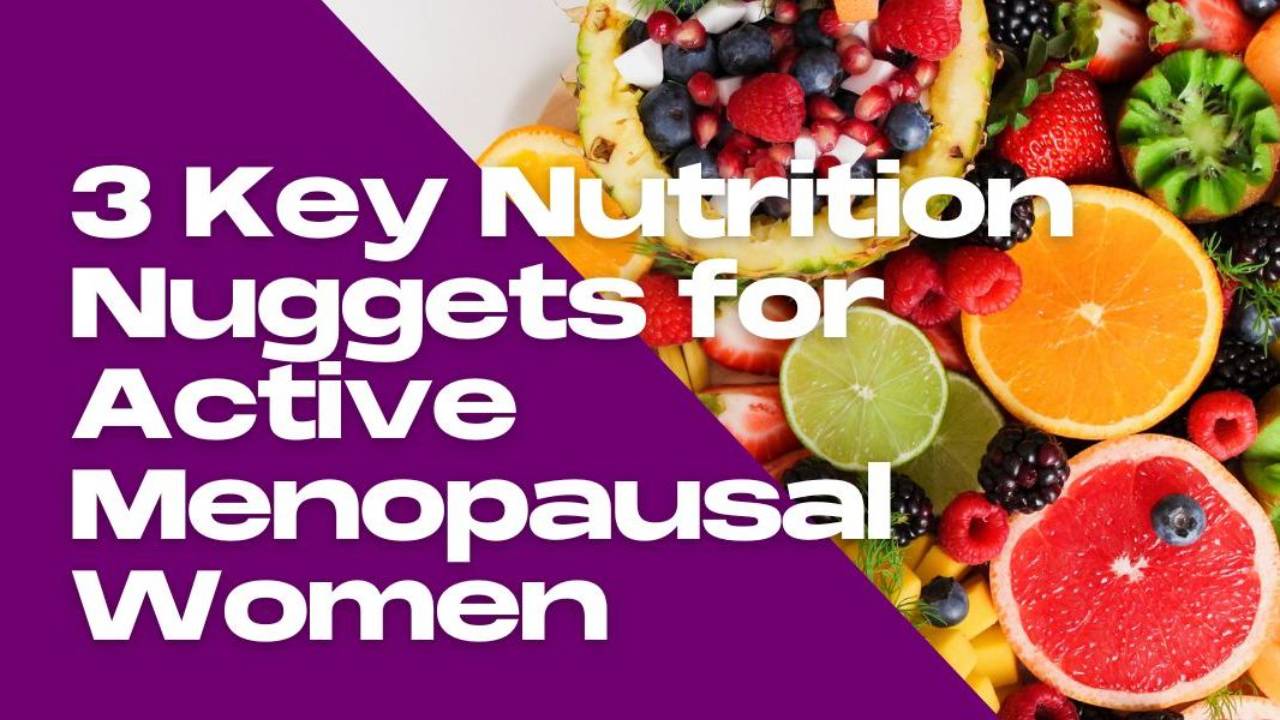
3 Key Nutrition Nuggets for Active Menopausal Women
Apr 01, 2025Here’s a rundown of the latest nutrition research for optimizing your performance and health.
By Selene Yeager
As we enter—and eventually exit—the menopause transition, our nutritional needs change, especially as active women who continue to train, workout, and maybe compete. Happily, we’re finally seeing more research dedicated to understanding the nutritional needs of female athletes in general, as well as those of midlife and older women.
The following are three nutrition nuggets from recent research that will help you make and maintain muscle, perform better, and recover faster.
Eat Enough!
We bang this drum a lot here, but it’s important that active women maintain adequate energy availability, i.e., eat enough to support both their training/workouts and daily life. When you don’t eat enough as an active woman, you can slip into a state known as low energy availability (LEA), which sets the stage for Relative Energy Deficiency in Sport (REDS), a condition that, according to research, can result in irreversible health and performance impairments including decreases in metabolism, poor hormone function, bone loss (which menopausal women can’t afford), lower immunity, impaired protein synthesis (another risk menopausal women can’t afford), fatigue, depression, anxiety, impaired digestion, and increased risk for cardiovascular disease.
According to the International society of sports nutrition position stand: nutritional concerns of the female athlete published last month, female athletes should aim for an energy availability (EA) of at least 45 calories per kg of lean body mass per day. The equation for determining energy availability (EA) is defined as your daily calorie intake minus the calories you burn during exercise divided by your fat free mass (FFM) in kilograms.
So, for a 68 kg/150 lb woman who has about 25 percent body fat, you’re looking at about 2,300 calories on a non-training day. This advice isn’t made to make anyone feel that they have to maniacally count calories. It’s to drive home the point that active women need more fuel than the 1,200 calories a day that gets drilled into us from mainstream media.
Still not convinced? A study published earlier this month reports that just 10 days of low energy availability in a group of trained females impaired their muscle protein synthesis and resulted in loss of lean mass and a drop in resting metabolism. Though this study was in premenopausal females, menopausal women should take note, because it’s already hard enough for us to make and maintain muscle mass to risk jeopardizing it with LEA.
Take Advantage of Your Recovery Window
There’s been some debate as to how important it actually is to restock your glycogen stores as quickly as possible after exercise (unless you’re doing two workouts a day). For peri and postmenopausal women, however, there are advantages of taking advantage of that post-exercise recovery window when your muscles are primed to pull glucose in to restock your muscle glycogen stores.
Because of the increase in insulin resistance associated with peri and postmenopause, the ISSN nutrition position stand for female athletes mentioned above recommends that athletes in this life phase take advantage of the non-insulin dependent phase of glycogen recovery–a window that lasts 30 to 40 minutes after a long hard effort that drains your glycogen stores. For optimum glycogen recovery after a really hard workout or event, the researchers recommend aiming for 1.2 grams of carbs per kilogram body weight.
Pair Your Protein with Your Weights
We’ll say it again: You want to make and maintain all the muscle you can through and beyond the menopause transition. It’s your biological savings account that will help you maintain health and independence as well as to continue doing the sports you love.
According to the new ISSN nutrition position stand, peri and postmenopausal female athletes should aim for protein intake in the range of 1.8 to 2.0 grams per kilogram of body weight per day to maintain muscle as estrogen declines and we have more insulin and anabolic resistance (aka it’s harder to make muscle).
Combining your protein with strength training is key. Research shows that muscle protein synthesis rates are elevated for up to four hours in older women when they combine resistance training with 6 to 10 grams of essential amino acids.
“The goal is to have 25 to 30 grams of protein three or four times a day coupled with strength training to help you maintain your muscle, which is crucial for health and well-being across the board,” explained Heidi Skolnik, CDN, of Nutrition Conditioning, LLC, and co-author of The Whole Body Reset explained in Hit Play Not Pause episode 103.
Of all the nutrition advice we can provide, the most important piece is eating enough. The consequences of LEA and REDS came up again and again at The Female Athlete Conference in Boston a couple of weeks ago. After decades of being told we should be smaller and lighter and eat less, research is showing the consequences female athletes in particular face when they’re not properly fueled. We’re here to change the narrative and keep us in the game throughout every phase of life.
Note: This post was edited to clarify that the 2,300 calories a day was for a non-training day.
Get Feisty 40+ in Your Inbox
We hate SPAM. We will never sell your information, for any reason or send you emails that suck!


